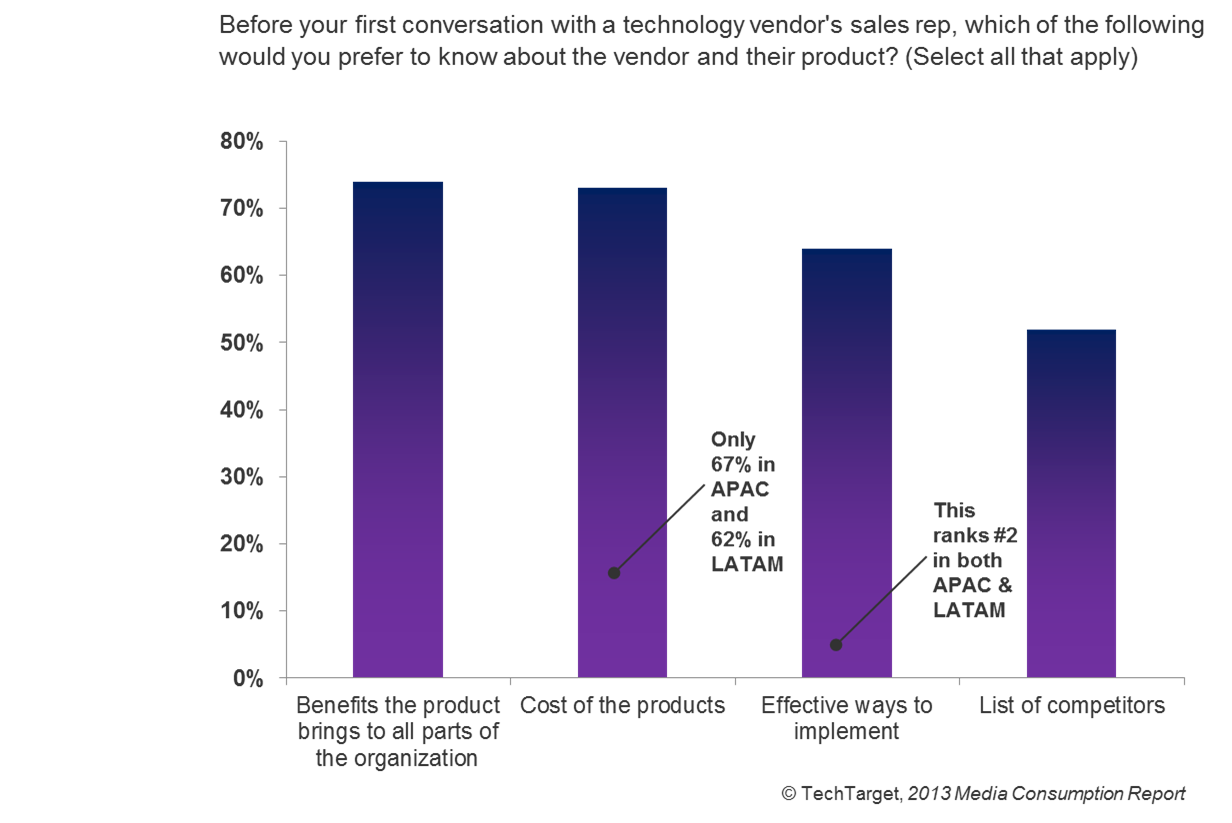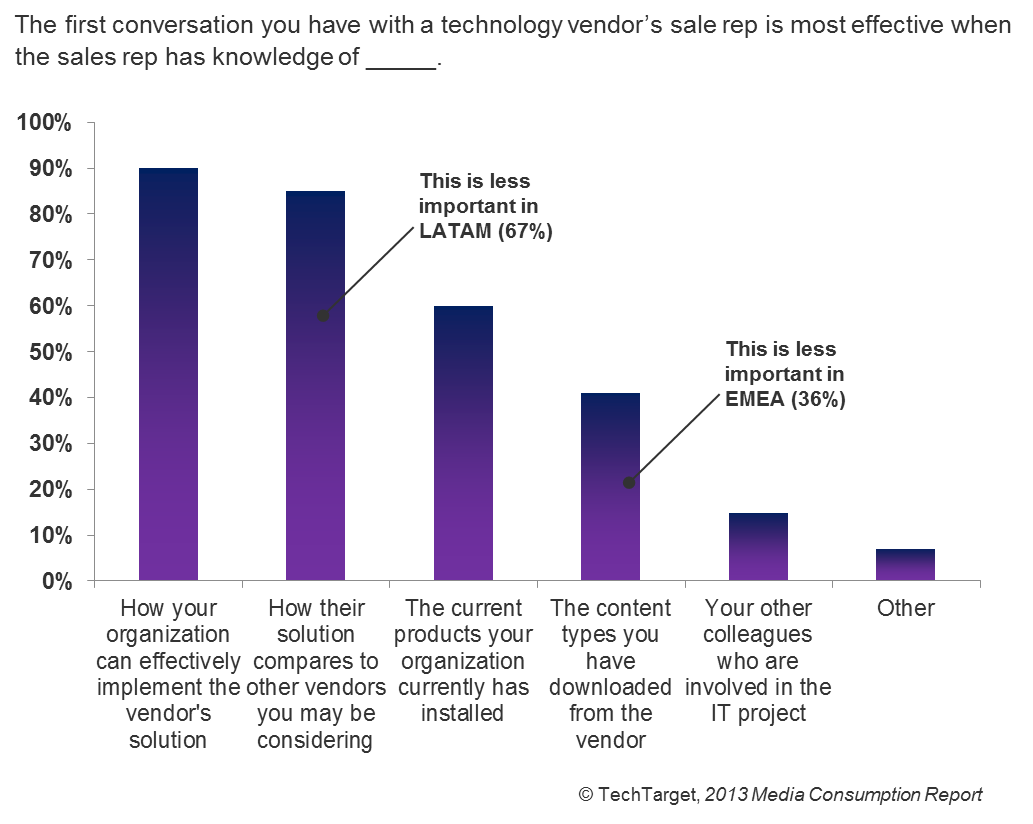
I bet you thought I was going to say “marketing.” That’s a given; however, we never really think much about the important role our content plays in the sales process—other than getting prospects into the funnel. What our content communicates (and generates) can actually make or break the ability of our sales teams to make the shortlist and even close the deal.
Today’s discerning prospect is expecting a whole lot more from his or her vendors, both before and during the first official call. Your prospects are getting anywhere from two-thirds to 90% of the way through the buying cycle before they proactively reach out to chat with sales. And they expect a lot from your content to get them through this portion of their journey.
In particular, the number one thing your prospects want to know before they talk to you is what benefit your product brings to their particular organization—which actually trumps cost—and by a pretty healthy delta across APAC and Latin America especially.

Your content is the best weapon you have to effectively educate your prospects on what they want to know before they even consider getting on the phone with your sales team. So, when you’re rounding out your content portfolio, make sure it successfully does the following things:
- It clearly communicates the benefits your solution can bring to the organization. Remember to do that within the confines of your buyer personas. Decipher how and when it works for a small vs. large business, or perhaps healthcare vs. manufacturing organizations. Your buyer wants you to explain your solution(s) within the context of their own ecosystem.
- It considers the location(s) your prospects are hailing from. This isn’t just about localization and translation of content; it’s also about considering what makes sense is a specific market. For example, in emerging markets implementation is a more hot-button topic than in established markets. Prioritize market maturity and geography when planning content.
“Your content is the best weapon you have to effectively educate your prospects…” @CourtneyLKay
Now if only that were enough to help your sales teams make that initial call a good one; but alas, there’s more. Today’s buyer also expects your sales representative to know a certain set of things about them and their organization on that initial call—in particular, how his or her organization can implement the solution and how it stacks up against the competition.

You may ask “what does my content have to do with a call?” Well, the great news about content is that (according to McKinsey) 35% of B2B pre-purchase activities are digital…which means measurable! You have the ability to track those content interactions and generate the data points that build the intelligence your sales team can use to better position the solution to the prospect or customer.
Remember to build a content strategy and marketing machine that:
- Tracks the data points that compile a snapshot of the prospect. By understanding the demographics, firmographics, challenges, and pain points the individual is looking to address, your salesperson can quickly and easily communicate that he or she knows the prospect more precisely and is equipped to address his or her needs.
- Communicates any known data about the account’s environment. Insights into the landscape of the organization can provide key indicators about what other solutions may be applicable, and thus give your salesperson insights into which competitors are in the running. Further, knowing what the infrastructure looks like can help a salesperson better explain how his or her solution may easily integrate with the client’s environment.
- Notes any other known activities, both with your brand and with others. Besides the obvious benefit of knowing which competitors a prospect has encountered, knowing which types of content he or she has consumed can help a salesperson better hone in on the opportunity and connect with the buyer on the pain point he or she is looking to address. It can also equip them to recommend other content assets, if more information is needed and the prospect isn’t quite ready to continue the conversation.
“35% of B2B pre-purchase activities are digital.”
To learn more about supercharging your content marketing strategies to build an effective intelligence-driven marketing and sales engine, check out our latest blog post series.

